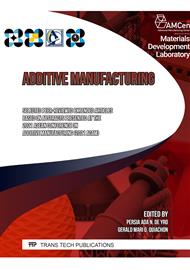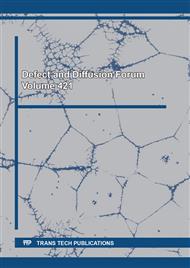p.3
p.9
p.15
p.21
p.27
p.45
p.53
p.63
p.75
Quasi-Static and Dynamic Mechanical Response of Alloy 625 Fabricated Using Laser Powder Bed Fusion
Abstract:
Additive manufacturing can provide advantages over conventional manufacturing for alloys such as alloy 625, which is expensive and difficult to machine. Laser powder bed fusion is a type of additive manufacturing that provides advantages but introduces complex effects on mechanical properties in produced components. This work examines some of these effects by assessing laser powder bed fusion processing parameters, several heat treatment schedules, and differing strain rate and temperature testing behavior using mechanical testing. It was determined that the porosity of fabricated samples of alloy 625 could be reduced below the control of 0.43 %, though the hardness does not appear to be sensitive to processing parameters. Heat treatments at higher temperatures appear to maintain a similar hardness to as-printed samples, but a treatment at 670 °C increased the hardness from 28.0 to 31.3 HRC. In compression tests, samples had higher stress/strain ratios in the dynamic range, though they did not fracture in any tests conducted. In a range from 25 to 500 °C, samples displaced a consistent thermal softening effect, suggesting that significant microstructural change may not occur, compatible with the typical high temperature working conditions of the alloy.
Info:
Periodical:
Pages:
21-26
Citation:
Online since:
December 2022
Authors:
Price:
Сopyright:
© 2022 Trans Tech Publications Ltd. All Rights Reserved
Share:
Citation:



